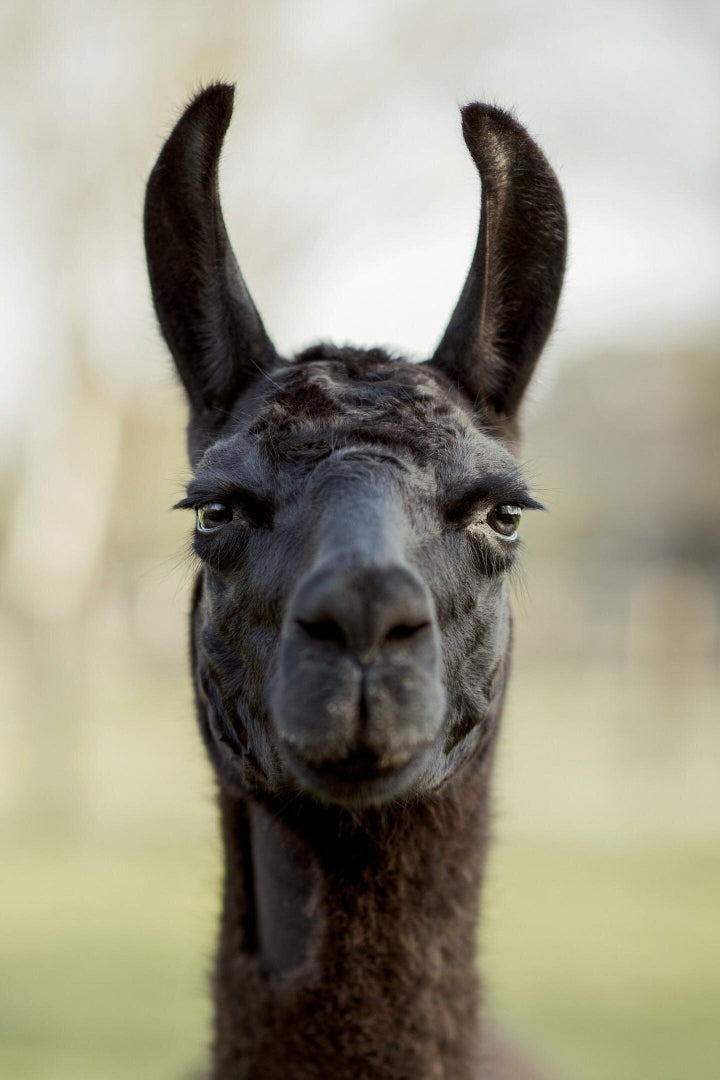Looking at a llama, you probably don’t immediately think “this animal could hold the key to treating the worst pandemic of a hundred years.”
But you’d be wrong.
It turns out the long-necked fuzzy beasts are remarkable for more than just looking cute, spitting on people, and going on grand Bonnie and Clyde-esque runs from the law.
A new study out of Belgium, published this week in the science journal “Cell,” found that llamas might actually hold key antibodies that could help treat COVID-19.
Researchers from Belgium’s VIB-UGent Center for Medical Biotechnology and the University of Texas at Austin found that a group of llamas on a research farm produces a special type of antibody that could be used to neutralize the coronavirus that causes COVID-19.
The research actually started back in 2016, when they were studying the effects of the llama antibodies in treating SARS and MERS — also diseases caused by coronaviruses. They were in the midst of wrapping up the study when the COVID-19 outbreak began in late 2019.
“The work was a side project in 2016. We thought maybe this was interesting,” Xavier Saelens, who co-authored the study told Reuters. “Then the new virus came and it became potentially more crucial, more important.”
The research centred on a four-year-old llama named Winter, who besides being adorable, could also be a medical hero.

Winter currently lives on a Belgian farm alongside 130 other llamas and alpacas. But when she was nine months old, in a process similar to humans getting shots to immunize them against a virus, she was injected with stabilized spike proteins from the viruses that caused SARS and MERS.
Researchers were able to isolate antibodies in Winter that made her immunized to SARS and MERS. Then, by linking two copies of antibodies that could hinder the SARS virus, they were able to find a new antibody that would bind to and neutralize the coronavirus that causes COVID-19.
“That was exciting to me because I’d been working on this for years,” graduate student Daniel Wrapp, who co-authored the study, said in a statement. “But there wasn’t a big need for a coronavirus treatment then. This was just basic research. Now, this can potentially have some translational implications, too.”
How does it work? Well, the coronaviruses are named as such because of the crown-like spikes that protrude from them. The llama antibodies are small enough to bind to the virus’s spike and block it from infecting cells, stopping it in its tracks.
As Bill Nye once said, “science rules.”
People are loving that Winter the llama could be the key to all of this.
But it’s not totally new — llamas have actually been used to fight disease before because of their ability to produce specialized disease-fighting antibodies known as nanobodies.
These so-called nanobodies are a lot smaller and nimbler than the antibodies produced by humans. And they can be more effective in fighting viruses. Sharks and other camelids like camels and alpacas can also produce the nanobodies.
Llama nanobodies have been used in the past to develop treatments for AIDS and influenza.
A llama-sourced antibody treatment for COVID-19 would likely take the form of an injection or inhaler.
“Vaccines have to be given a month or two before infection to provide protection,” Jason McLellan, a co-senior author of the study, said in a statement. “With antibody therapies, you’re directly giving somebody the protective antibodies and so, immediately after treatment, they should be protected. The antibodies could also be used to treat somebody who is already sick to lessen the severity of the disease.”
But that’s a long way off. Scientists are now beginning trials on hamsters, and then could move to human trails later on if they proves successful. But when a treatment does come, we might have Winter to thank for it.
So next time you see a llama, say thanks for all the antibodies. They’re putting in work.
With files from Reuters.
Also on HuffPost: